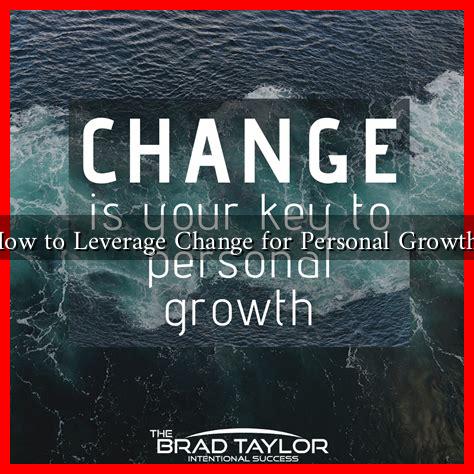-
Table of Contents
How to Leverage Change for Personal Growth
Change is an inevitable part of life. Whether it’s a new job, a move to a different city, or a shift in personal relationships, change can often feel overwhelming. However, embracing change can be a powerful catalyst for personal growth. In this article, we will explore how to leverage change to foster self-improvement, resilience, and a more fulfilling life.
Understanding the Nature of Change
Before we can effectively leverage change, it’s essential to understand its nature. Change can be categorized into two types:
- External Change: These are changes that occur outside of our control, such as economic shifts, natural disasters, or changes in societal norms.
- Internal Change: These are changes that we initiate ourselves, such as pursuing a new career path, adopting healthier habits, or changing our mindset.
Recognizing the type of change you are facing can help you develop appropriate strategies to navigate it effectively.
Embracing a Growth Mindset
One of the most effective ways to leverage change for personal growth is to adopt a growth mindset. Coined by psychologist Carol Dweck, a growth mindset is the belief that abilities and intelligence can be developed through dedication and hard work. Here’s how to cultivate this mindset:
- View Challenges as Opportunities: Instead of seeing obstacles as setbacks, view them as chances to learn and grow.
- Embrace Failure: Understand that failure is a part of the learning process. Analyze what went wrong and use it as a stepping stone for future success.
- Seek Feedback: Constructive criticism can provide valuable insights. Be open to feedback and use it to improve.
Research shows that individuals with a growth mindset are more likely to achieve their goals and overcome challenges. According to a study published in the journal *Psychological Science*, students who were taught to adopt a growth mindset showed significant improvements in their academic performance.
Setting Goals During Times of Change
Change often brings uncertainty, making it crucial to set clear, achievable goals. Here’s how to set effective goals during transitional periods:
- Be Specific: Clearly define what you want to achieve. Instead of saying, “I want to be healthier,” specify, “I will exercise for 30 minutes, five times a week.”
- Make Them Measurable: Establish criteria for measuring progress. This could be tracking your workouts or keeping a journal of your experiences.
- Set a Timeline: Create a timeline for achieving your goals. This adds a sense of urgency and helps you stay focused.
For example, when faced with a job loss, instead of feeling defeated, you could set a goal to apply for five new jobs each week while also updating your resume and LinkedIn profile.
Building Resilience Through Change
Resilience is the ability to bounce back from adversity. It is a crucial skill when navigating change. Here are some strategies to build resilience:
- Practice Self-Care: Prioritize your physical and mental well-being through regular exercise, healthy eating, and mindfulness practices.
- Develop a Support Network: Surround yourself with supportive friends and family who can provide encouragement and perspective during tough times.
- Stay Flexible: Be willing to adapt your plans as circumstances change. Flexibility can help you navigate unexpected challenges more effectively.
A study by the American Psychological Association found that individuals with strong social support systems are more resilient and better equipped to handle stress.
Conclusion: Embracing Change for a Brighter Future
Change can be daunting, but it also presents an incredible opportunity for personal growth. By understanding the nature of change, adopting a growth mindset, setting clear goals, and building resilience, you can transform challenges into stepping stones for success. Remember, every change is a chance to learn, adapt, and grow. Embrace it, and you may find that the path to personal growth is paved with the very changes you once feared.
For further reading on personal growth and resilience, consider exploring resources from the American Psychological Association.

